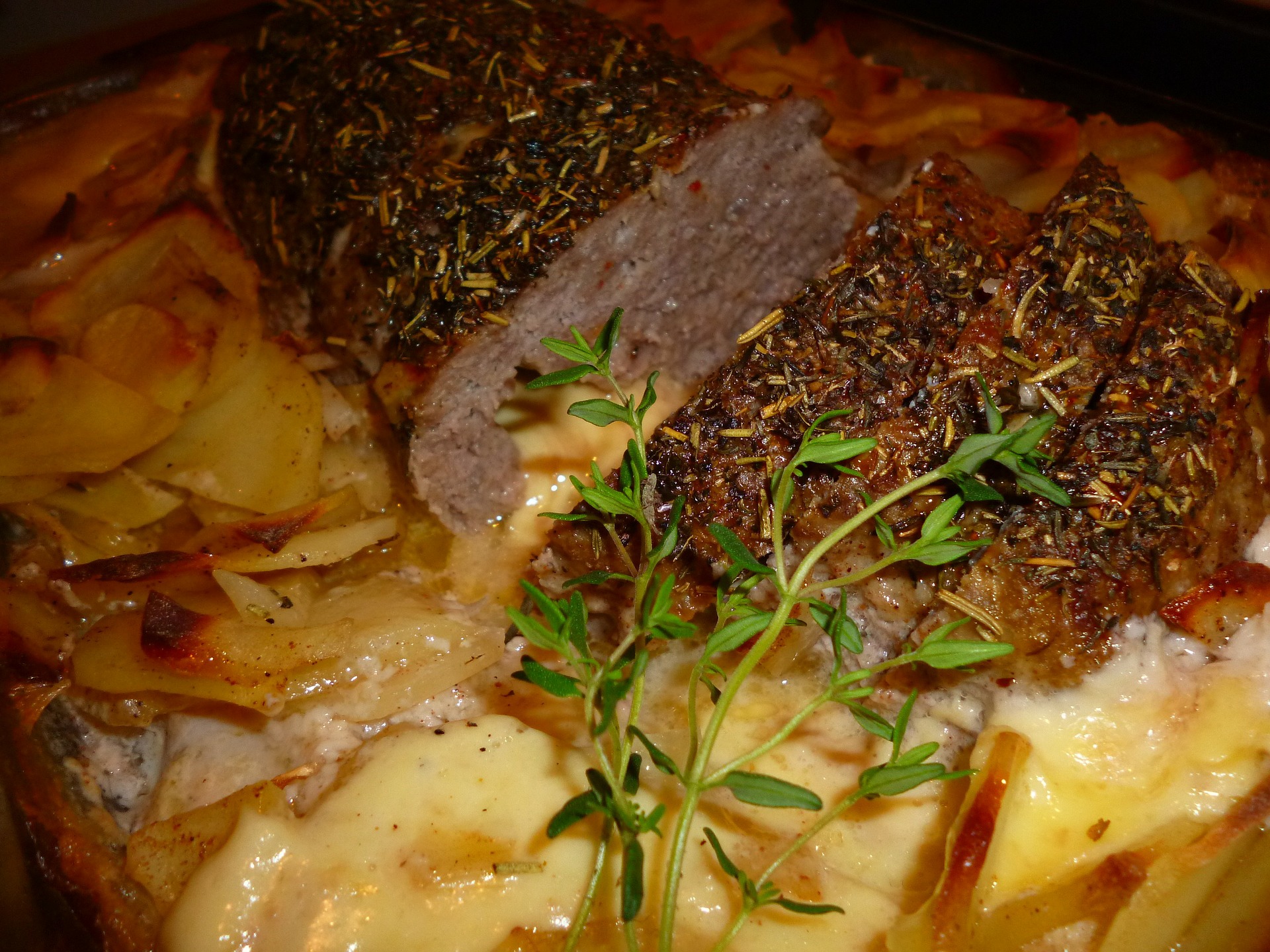Today’s food history post is a versatile comfort food that has changed and adapted as necessary over the years: meatloaf.
Loaves or patties of minced meat have been utilized for centuries. In Medieval Europe bits and pieces of meat were finely diced and combined with seasonings, fruits, and nuts.
Meatloaf in America can be traced back to the Pennsylvanian Dutch via the 1700s. These settlers would utilize as much of the pig as possible – lungs, liver, heart, etc. – and the meat would be combined with cornmeal and seasonings, and pressed into a loaf shape.
Three things really advanced meatloaf as an iconic American dish: the invention of the meat grinder, and advancements in refrigeration, both in the mid 1800s, and the Great Depression, which was of course during the 1930s.
Prior to the meat grinder, meat had to be minced by hand. Usually this was done with a wooden bowl and a curved knife and it was laborious and tedious. The meat grinder solved this problem as it became commercially accessible. Today, most people don’t own a meat grinder, but it’s a moot point now as packaged minced meat is widely available.
Also in the mid to late 1800s, refrigeration was making headway. Between the meat grinder and the refrigerator, enjoying meatloaf at home was becoming a cinch. Recipes for meatloaf soon followed.
One of the first, if not the first, printed meatloaf recipe was in 1884 in the Boston Cooking School Cook Book. It was for a veal loaf and meat souffle – veal was often used instead of beef, because it was more economical at the time. Of course today we can use beef, pork, veal, or any combination therein.
When the Depression hit, meatloaf popularity soared for obvious reasons. One, it was economical, being able to utilize tough cuts of meat; fillers could also be added to stretch the serving amount. Two, it was a warm, filling comfort food when people really needed some comfort.
America was beginning to consume more canned and processed foods at this time, some of which could really boost the appeal of meatloaf: powdered sauce mixes, canned soup, ketchup, etc. The companies behind these processed foods jumped on the meatloaf bandwagon by providing meatloaf recipes on the back of the products.
With war-time rationing limiting meat options during the 1940s, meatloaf expanded to include…well, meat-less loafs. Cookbooks such as Cooking on a Ration of 1943 included recipes with beans, nuts, and rice that were formed into meatloaf-like shapes.
As I’ve mentioned in several other Food History posts, the 1950s and1960s was the era in America where housewives were really in that kitchen, slaving away for their families more than ever before. At this time, with meatloaf, home cooks started thinking outside the loaf when making this iconic dish at home.
Good Housekeeping circa 1955 boasted recipes like Mushroom-Stuffed Meatloaves and a Spicy Peach Loaf. Also in the 1950s, the “frosted” meatloaf came about: mashed potato spread out over the meatloaf and baked into a crust, as a sort of shepherd’s pie.
By the 1990s, restaurants were jumping on the meatloaf bandwagon. They dressed up what would normally be a simple home cooked meal into elaborate and fancy dishes.
Today, with home cooking on the rise again, and with websites like Pinterest out there, meatloaf continues to be as versatile as it always has been. You can go simple with a classic meatloaf: ground meat, breadcrumbs, and egg, with gravy or ketchup on the side.
Or, you could disperse diced vegetables and herbs throughout your loaf.
Or, you could stuff a hard boiled egg inside, add diced vegetables, or capitalize on another popular dish, like with bacon cheeseburger meatloaf or French onion soup meatloaf.
Personally, I can always appreciate a classic food item that can be either enjoyed in its simplicity, or can be altered to fit personal tastes and what food items you have on hand. Macaroni and cheese also fits this bill to a tee.

Comments
One response to “Food history: meatloaf”
Your guide is really useful to me.<a href="http://goo.gl/Oo7M0v" Visit my site to see more information about meat grinder